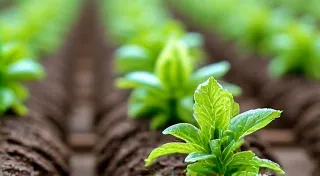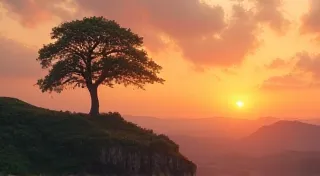Troubleshooting Common Weather Station Problems
Building your own weather station is a fantastic project, blending science, electronics, and practical skills. However, even with careful planning and construction, problems can arise. This article provides solutions to frequently encountered issues in DIY weather stations, from inaccurate readings to instrument failure.
1. Inaccurate Temperature Readings
One of the most common complaints is inaccurate temperature readings. Several factors can contribute to this:
- Solar Radiation: Direct sunlight significantly impacts temperature sensors, especially those not shielded. Ensure your temperature sensor is placed in a shaded environment, ideally inside a Stevenson screen or a similar ventilated enclosure. Using a white-painted enclosure helps reflect sunlight. For a deeper understanding of the instruments used in meteorology, consider reading "Understanding Basic Weather Instruments: A Beginner's Guide".
- Proximity to Heat Sources: Keep the sensor away from buildings, pavement, cars, and other sources of heat. Even a slight proximity can skew the readings.
- Ventilation: The sensor needs adequate airflow to accurately reflect ambient air temperature. A blocked sensor will measure the temperature of its own casing, which can be much higher than the surrounding air.
- Sensor Calibration: While less common, sensors can drift out of calibration. Comparing your sensor’s readings with a reliable weather source can help you identify drift. Some sensors allow for user calibration.

2. Humidity Sensor Issues
Humidity sensors are notoriously susceptible to dust and contaminants. Here's how to address common humidity problems:
- Dust and Dirt: Regular cleaning is crucial. Gently clean the sensor with a soft brush and compressed air. Avoid touching the sensor’s internal components.
- Moisture Buildup: Excessive moisture can damage the sensor. Ensure good ventilation around the sensor and consider using a desiccant pack (silica gel) inside the enclosure.
- Condensation: In humid climates, condensation can form on the sensor. This can lead to inaccurate readings and corrosion. A heated humidity sensor can help prevent condensation, but requires a power source. To fully grasp the science behind humidity measurement, explore "Humidity Explained: Measuring Moisture in the Air".
3. Wind Speed and Direction Problems
Anemometers (wind speed sensors) and wind vanes (wind direction sensors) can be challenging to maintain:
- Obstructions: Ensure the anemometer is mounted high enough to avoid obstructions like trees and buildings, which can significantly impact readings.
- Bearing Issues: Anemometers rely on bearings that can seize up due to dirt, corrosion, or lack of lubrication. Regular cleaning and lubrication (using a lightweight oil) are essential.
- Wind Vane Alignment: The wind vane needs to rotate freely and accurately align with the wind direction. Check for obstructions and ensure the mounting mechanism is secure.
- Ice Buildup: In cold climates, ice buildup can freeze the anemometer, preventing it from spinning correctly.

4. Rain Gauge Accuracy
Rain gauges can be affected by several factors:
- Debris: Leaves, insects, and other debris can interfere with the tipping mechanism or clog the spout. Regular cleaning is crucial.
- Wind Effects: Wind can blow rain out of the gauge or cause it to accumulate unevenly. Shielding the rain gauge can help.
- Evaporation: In hot and dry climates, evaporation can reduce the measured rainfall. For a deeper dive into the instruments used, explore "Understanding Basic Weather Sensors: Thermometers, Hygrometers, and Rain Gauges".
5. Data Logging and Transmission Issues
If your weather station includes data logging or wireless transmission, you may encounter these problems:
- Power Supply: Ensure a stable power supply to the data logger and transmission module.
- Connectivity: Check for interference and signal strength issues with wireless connections.
- Memory Card Capacity: For data loggers using memory cards, ensure there's sufficient free space.
6. Sensor Failure
While less frequent, sensors can fail. Look for these signs:
- Constant Readings: A sensor that consistently reports the same value, regardless of the actual conditions, is likely failed.
- Erratic Readings: Wildly fluctuating and illogical readings are another sign of failure.
- No Output: A sensor that consistently reports no output is likely failed.

To ensure accurate measurements and a well-functioning weather station, it’s crucial to understand the principles behind each sensor and the potential pitfalls. Regular maintenance, careful placement, and a bit of troubleshooting can go a long way. Understanding the different types of basic weather instruments and how they work is key to successful operation. This extends beyond just knowing which instrument to use; it's about recognizing when something isn't functioning as expected and why. The principles behind these sensors are rooted in physics and engineering, and gaining a foundational understanding of these fields can further enhance your ability to diagnose and solve problems.
Furthermore, the placement of your weather station is paramount to obtaining reliable data. The environment surrounding your station significantly influences the readings you obtain. Consider factors such as solar radiation, proximity to heat sources, wind patterns, and potential obstructions. Proper shielding and ventilation are essential for accurate temperature and humidity measurements. Regular inspection of the anemometer’s bearings and the rain gauge for debris is also crucial.
Disclaimer: These are common troubleshooting steps. The specific problems and solutions may vary depending on your weather station’s design and components. Always consult the manufacturer’s documentation for detailed instructions and safety precautions.





